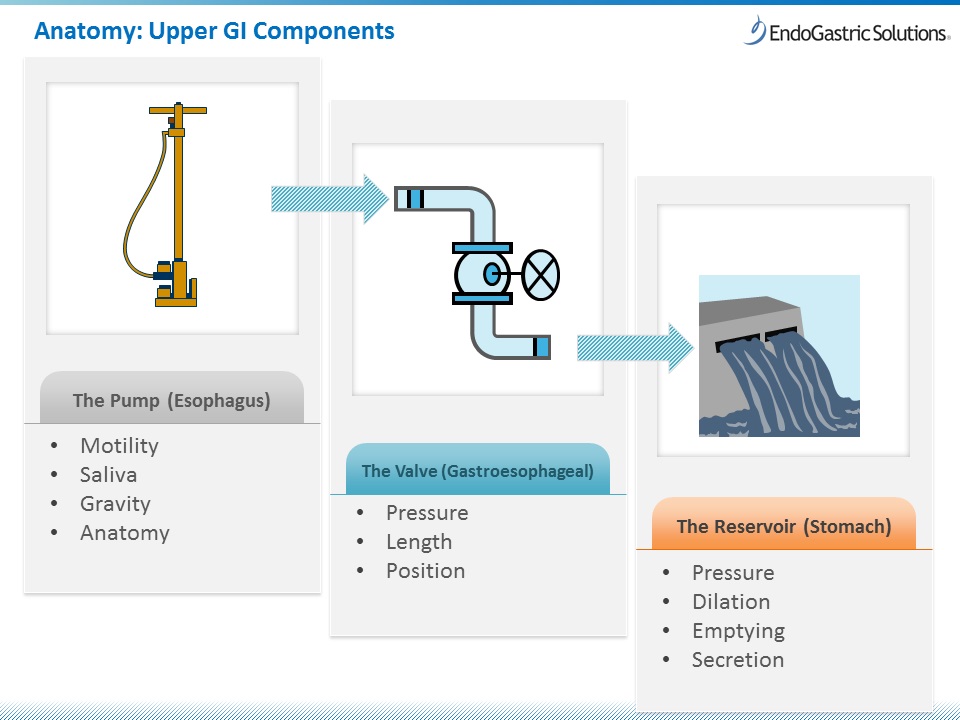Causes of GERD: Reflux Chemistry and Anatomy
Gastroesophageal Reflux Disease (GERD) generally stems from just two underlying causes: those that have to do with reflux chemistry and those that stem from anatomical dysfunction.
Chemical causes of GERD can include:
- fluids refluxed from the stomach irritating or damaging the esophagus
- general sensitivity of esophageal tissue, often caused by natural low acid intolerance, use of prescription drugs or other drugs as alcohol and tobacco
Most of the time, however, GERD can be attributed to a patient’s own anatomy.
The biology of swallowing, for healthy patients, is simple. When a person with normal, healthy anatomy swallows, the valve between the esophagus and the stomach (gastroesophageal valve) opens. This allows food to pass. The valve then closes to prevent stomach contents from backwashing or refluxing back up into the esophagus. A normal, healthy valve serves as an effective antireflux barrier and experts consider it the most important factor in preventing GERD.
For people with GERD, this valve becomes dysfunctional and does not close appropriately. This allows abnormal amounts of both acidic and non-acidic fluids to backwash into the esophagus and causes GERD.
For people with GERD, this valve becomes dysfunctional and does not close appropriately. This allows abnormal amounts of both acidic and non-acidic fluids to backwash into the esophagus.
What Causes the Gastroesophageal Valve to Become Dysfunctional?
Any one of the following factors, or a combination of these factors, can result in disruption of the gastroesophageal valve and abnormal exposure of the esophagus to acid reflux:
- Genetic: Anatomy varies from person to person. Some people naturally have valves that function less competently than others.
- Injury to the upper chest: Often the result of a sports-related injury or a traumatic accident, these incidents can cause the valve to lose its shape.
- Obesity or diet related issues: Excess weight can cause distortion of normal anatomy.
- Age: As people age, musculature can lose its integrity and affect the anatomy in the esophagus and stomach area.
A GERD diagnosis from a qualified physician can help you identify the cause of your GERD. Knowing the cause can also help you determine whether or not you are a good candidate for a TIF procedure to treat your GERD.
If you suffer any symptoms of reflux more than twice a week, you may have chronic acid reflux. Take the GERD-HRQL survey and bring the results to a doctor for a GERD evaluation.


